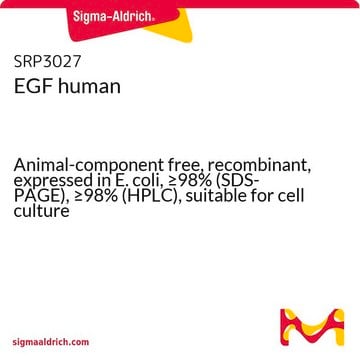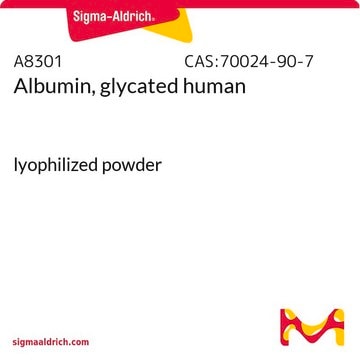All Photos(1)
About This Item
Empirical Formula (Hill Notation):
C79H100N16O27
Molecular Weight:
1705.73
UNSPSC Code:
51111800
NACRES:
NA.32
Recommended Products
Assay
≥92% (HPLC)
form
lyophilized
composition
Peptide Content, ≥75%
storage condition
protect from light
storage temp.
−20°C
Amino Acid Sequence
Glp-Gly-Pro-Trp-Leu-Glu-Glu-Glu-Glu-Glu-Ala-Tyr-Gly-Trp
General description
Gastrin, a classic digestive hormone, is found in three major forms: gastrin-34 (big gastrin), gastrin-17 (little gastrin), and gastrin-13 (minigastrin). Mammalian gastrin consists of a C-terminal four amino-acid sequence and a sulfated tyrosine 7 residue from the C-terminus. Gastrin is mostly found in the G cells of the stomach mucosa. Nutrients and gastrin-releasing peptides stimulate the release of gastrin.
Application
Gastrin I (1-14) has been used:
- as a component of gastric cancer stem/progenitor cell (GCSPC) medium for tumorsphere culture
- as a supplement in organoid growth medium (OGM) for patient-derived organoid (PDO)
- in viable lymphocytes culture for re-stimulation assay
Biochem/physiol Actions
Gastrin is a linear polypeptide that induces the secretion of gastric acid (HCl) by parietal cells.
The peptide gastrin I (1-14), which lacks a basic site, forms positive ions. Gastrin promotes the production and liberation of histamine in enterochromaffin-like cells through cholecystokinin 2 receptor (CCK2R). It also stimulates the release of gastric acid in parietal cells via the CCK2R receptor. Gastrin plays a key role in Zollinger-Ellison syndrome. It may play a role in the development of colorectal carcinoma.
Storage Class Code
11 - Combustible Solids
WGK
WGK 3
Flash Point(F)
Not applicable
Flash Point(C)
Not applicable
Certificates of Analysis (COA)
Search for Certificates of Analysis (COA) by entering the products Lot/Batch Number. Lot and Batch Numbers can be found on a product’s label following the words ‘Lot’ or ‘Batch’.
Already Own This Product?
Find documentation for the products that you have recently purchased in the Document Library.
Customers Also Viewed
Zhi-Feng Miao et al.
Stem cells (Dayton, Ohio), 32(12), 3062-3074 (2014-08-22)
Peritoneal dissemination is the most common cause of death in gastric cancer patients. The hypoxic microenvironment plays a major role in controlling the tumor stem cell phenotype and is associated with patients' prognosis through hypoxia-inducible factor-1α (HIF-1α), a key transcriptional
Junjie Gao et al.
Rapid communications in mass spectrometry : RCM, 22(24), 4066-4072 (2008-11-21)
Negative ion production from peptides and proteins was investigated by matrix-assisted laser desorption/ionization time-of-flight (MALDI-TOF) mass spectrometry. Although most research on peptide and protein identification with ionization by MALDI has involved the detection of positive ions, for some acidic peptides
Gastrin
Handbook of Hormones (2016)
C M Thorburn et al.
Gastroenterology, 115(2), 275-280 (1998-07-25)
Gastrin is a putative promoter of colorectal carcinomas. The aim of this study was to evaluate the temporal relationship between gastrinemia and development of colorectal malignancy. We conducted a nested case-control study among 128,992 subscribers to a health maintenance program
F L Lai Benjamin et al.
Advanced functional materials, 30(48) (2021-03-12)
Tumor progression relies heavily on the interaction between the neoplastic epithelial cells and their surrounding stromal partners. This cell cross-talk affects stromal development, and ultimately the heterogeneity impacts drug efflux and efficacy. To mimic this evolving paradigm, we have micro-engineered
Our team of scientists has experience in all areas of research including Life Science, Material Science, Chemical Synthesis, Chromatography, Analytical and many others.
Contact Technical Service
![[Leu15]-Gastrin I human ≥95% (HPLC)](/deepweb/assets/sigmaaldrich/product/structures/153/342/d4cb3dd7-13f1-46cf-8d1f-3907a5de7a83/640/d4cb3dd7-13f1-46cf-8d1f-3907a5de7a83.png)












